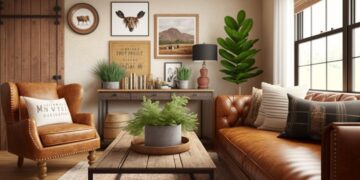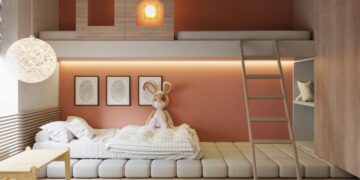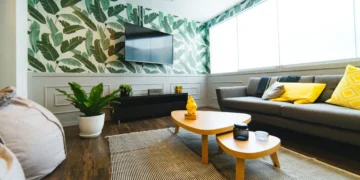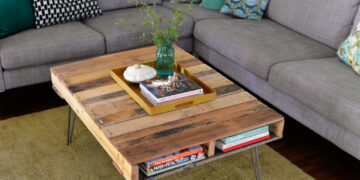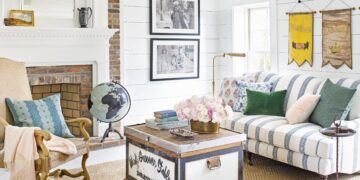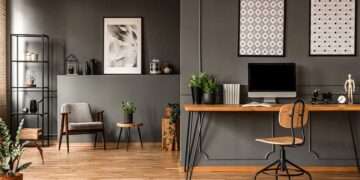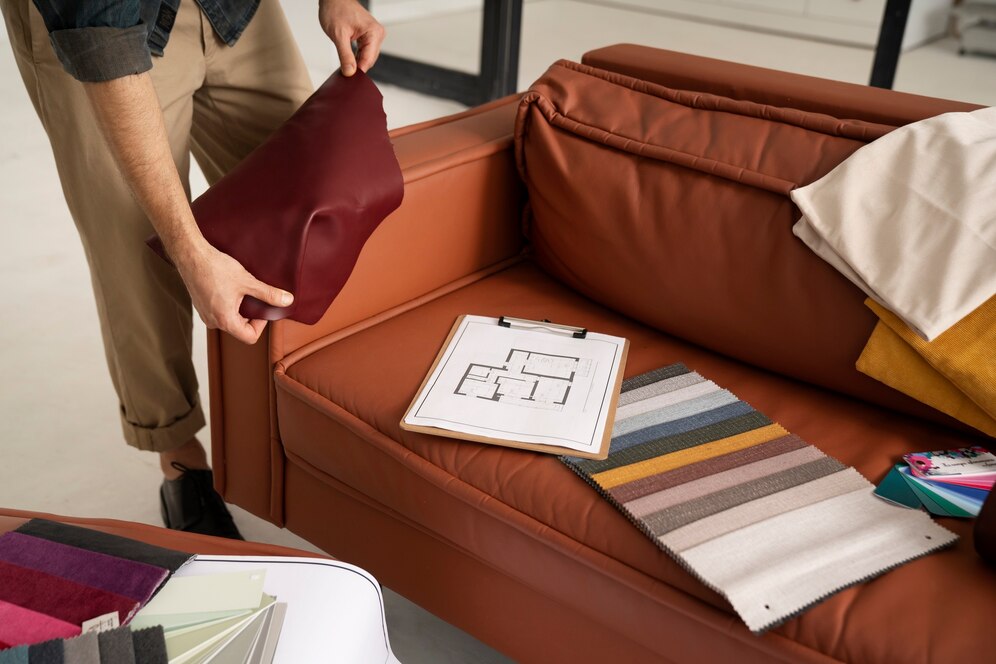Furniture design is the art and science of creating functional and aesthetically pleasing pieces of furniture that enhance the comfort and well-being of individuals. It involves a careful balance between form and function, combining creativity and technical knowledge to produce designs that not only serve practical purposes but also elevate the overall ambience of a space.
With the constant evolution of design trends, furniture designers continuously push boundaries to cater to ever-changing consumer needs and preferences.
Definition of Furniture Design
Furniture design encompasses a broad range of disciplines, including architecture, interior design, industrial design, and craftsmanship. It involves conceptualizing, prototyping, and manufacturing furniture pieces that seamlessly integrate with various interior styles while fulfilling their intended purpose. Furniture designers meticulously consider factors such as ergonomics, material selection, construction techniques, and aesthetics to create pieces that are visually appealing yet functional.
Importance of Comfort in Furniture Design
Comfort lies at the core of furniture design, as it directly impacts our physical well-being and emotional state. Comfortable furniture enhances relaxation while supporting proper posture and minimizing stress on the body.
A comfortable chair or sofa invites us to unwind after a long day or engage in meaningful conversations with loved ones. In recent years, there has been an increased focus on ergonomics—designing furniture that adapts to human anatomy—ensuring optimal comfort for extended periods.
Overview of the Latest Trends in Furniture Design for 2024
The world of furniture design is constantly evolving as new trends emerge with each passing year. In 2024, we can expect to witness exciting developments driven by technological advancements, sustainable practices, minimalism infused with multifunctionality, and an emphasis on bringing nature indoors through biophilic designs.
Sustainable materials and eco-friendly designs will continue to gain prominence in 2024. The industry is embracing sustainable practices by utilizing reclaimed wood, recycled materials, and eco-friendly manufacturing techniques.
Consumers are increasingly seeking furniture that aligns with their environmentally conscious values. Minimalist and multifunctional designs are anticipated to be preferred choices for those living in smaller spaces or desiring clutter-free environments.
Furniture that cleverly integrates hidden storage compartments while maintaining sleek aesthetics will be highly sought-after. Technology integration is another trend that will shape furniture design in 2024.
Smart furniture with built-in charging ports, wireless connectivity, and voice-controlled features will enhance convenience and automation within our living spaces, seamlessly integrating technology into our daily lives. With this overview of the latest trends in furniture design for 2024, let us now delve deeper into each subtopic to explore the intricacies of crafting comfort through innovative designs.

Sustainable materials and eco-friendly designs
Embracing Reclaimed Wood and Recycled Materials: Harmonizing Style and Sustainability
In the realm of furniture design for 2024, sustainability has emerged as a paramount concern. Designers are increasingly turning to reclaimed wood and recycled materials to create pieces that not only exude elegance but also minimize environmental impact. Reclaimed wood provides a rustic charm while reducing the need for the extraction of new timber.
By repurposing discarded materials such as old barn wood or salvaged furniture, designers add a touch of history while reducing waste. Similarly, incorporating recycled materials like plastic or metal into furniture production helps divert valuable resources from landfills, allowing for a more ecologically conscious approach to design.
Integration of Sustainable Manufacturing Processes: Paving the Way for Eco-Friendly Creations
Beyond material choices, sustainable manufacturing processes are gaining momentum in furniture design circles. Manufacturers are keen on adopting practices that prioritize energy efficiency, waste reduction, and responsible sourcing. Embracing renewable energy sources like solar power and implementing efficient production methods minimizes the carbon footprint during manufacturing.
In addition, using water-based adhesives instead of harmful chemicals contributes to healthier indoor environments without compromising quality or durability. By adhering to these sustainable principles throughout the entire production chain, designers can ensure that their creations contribute positively to both aesthetic appeal and environmental welfare.
Minimalist and multifunctional designs
Innovative Space-Saving Solutions: Seamlessly Combining Form with Function
As urban living spaces become more compact and versatile, furniture designers are rising to the challenge by offering ingenious space-saving solutions. The marriage of minimalism with multifunctionality has become a cornerstone of contemporary design trends for 2024.
From foldable tables that effortlessly transform into desks or dining surfaces to sleek sofas with hidden compartments for additional storage, these innovative designs optimize space without sacrificing style. By carefully considering the needs of urban dwellers, furniture designers are crafting pieces that seamlessly adapt to the dynamic demands of modern living.
Incorporation of Hidden Storage Compartments: Tidiness and Elegance in Harmony
Adapting to smaller living spaces isn’t just about optimizing floor area; it’s also about harnessing storage potential within the furniture itself. Designers understand the value of hidden storage compartments and are integrating them seamlessly into various pieces. For example, coffee tables with lift-up tops reveal spacious hidden compartments for stowing away books, remote controls, or other items that can clutter a room.
Similarly, beds with built-in drawers provide ample space to store bedding essentials or seasonal clothing. By blending meticulous craftsmanship with intelligent design elements, these furniture pieces offer a harmonious blend of orderliness and aesthetic appeal, allowing individuals to maintain a clutter-free environment while revelling in the beauty of their surroundings.
Technology integration in furniture design
The Rise of Smart Furniture: Seamlessly Fusing Comfort and Connectivity
In an era where technology permeates every aspect of our lives, including our homes, it comes as no surprise that it has found its way into furniture design for 2024. Smart furniture takes comfort and convenience to a whole new level by incorporating integrated charging ports and wireless connectivity directly into its structure.
Imagine sitting on a plush sofa that not only provides exceptional comfort but also conveniently charges your phone wirelessly as you relax. These cutting-edge pieces blend seamlessly into modern lifestyles by enabling users to stay connected without sacrificing comfort or aesthetics.
Voice-Controlled Features: Empowering Automation at Your Fingertips
Voice-controlled technology has become increasingly prevalent in households, making tasks more efficient and effortless. In furniture design for 2024, voice-controlled features are finding their way into various pieces to enhance convenience and automation.
Imagine commanding your lounge chair to recline or adjusting the lighting ambience of your bedroom simply by using voice commands. These intelligent furniture designs prioritize user comfort and provide a seamless integration of technology, enabling individuals to effortlessly control their surroundings through voice activation, ultimately providing a more immersive and personalized experience.

A) Ergonomic Designs for Enhanced Comfort
The Art of Harmonizing Form and Function
In the pursuit of crafting comfort, furniture designers are increasingly embracing the principles of ergonomics. Recognizing that physical well-being is directly linked to comfort, ergonomic designs aim to create furniture pieces that provide optimal support for the human body.
This involves carefully considering factors such as posture, body alignment, and movement patterns. Designers are incorporating adjustable features into their creations, allowing users to customize their furniture according to their individual needs.
From height-adjustable chairs with lumbar support to desks with adjustable angles for improved wrist alignment, ergonomic designs prioritize both comfort and health. Furthermore, advanced materials like memory foam or gel-infused cushions are being employed to enhance comfort by contouring and adapting to the body’s unique contours.
B) Biophilic Design: Bringing Nature Indoors
Reconnecting with Our Natural Roots
Biophilic design is an innovative approach that seeks to bridge the gap between indoor and outdoor spaces by integrating elements inspired by nature into furniture design. Recognizing the profound impact nature has on human well-being, designers are exploring new ways to bring greenery to our living spaces. This trend goes beyond simply adding a potted plant in the corner; instead, it entails incorporating natural elements such as living walls or water features into furniture pieces.
Additionally, lighting fixtures mimic natural lighting conditions, while organic shapes and textures evoke a sense of harmony with the natural world. Biophilic design aims not only to create visually appealing spaces but also to promote relaxation and reduce stress levels.
C) Customizable Furniture: Tailoring Comfort to Individual Preferences
Furniture as Unique as You Are
As consumers seek personalized experiences in all aspects of their lives, it comes as no surprise that there is a rising demand for customizable furniture solutions. Customizable furniture allows individuals to tailor comfort and aesthetics to their specific preferences, ensuring a truly unique and personalized experience.
Modular pieces that can be rearranged or expanded provide flexibility for changing needs, while interchangeable components offer the opportunity to refresh the look of a piece without having to replace it entirely.
Technology also plays a role in enabling customization through virtual platforms that allow users to visualize their desired configurations before making a purchase. Customizable furniture not only enhances comfort but also allows individuals to express their style and create spaces that reflect their individuality.
D) Sustainable Upholstery Materials: Eco-Friendly Comfort Solutions
Comfort with Conscience
With increasing awareness of environmental issues, sustainability has become a fundamental consideration in furniture design. In the realm of upholstery materials, designers are exploring eco-friendly options that minimize harm to the planet without compromising on comfort or quality.
This includes using recycled fabrics made from post-consumer waste or repurposed textiles, as well as incorporating plant-based fibres like bamboo or hemp.
These sustainable materials not only reduce our reliance on non-renewable resources but also have lower carbon footprints during production compared to traditional alternatives. By choosing furniture upholstered with eco-friendly materials, consumers can enjoy enhanced comfort while contributing positively towards building a more sustainable future.
Conclusion
In the realm of furniture design for 2024, comfort takes centre stage alongside evolving style trends. From ergonomic designs focusing on user well-being and adjustable features providing customized support to biophilic designs connecting us with nature indoors and customizable options tailoring comfort to individual preferences, designers are pushing boundaries to create unique experiences for users seeking both physical and emotional comfort in their living spaces.
Furthermore, sustainable upholstery materials not only provide eco-friendly solutions but also contribute positively towards preserving our planet’s resources for future generations.
The future of comfortable furniture design looks bright, embodying a harmonious blend of functionality, aesthetics, and sustainability. So as we enter this new era of crafted comfort, let us embrace the limitless possibilities that await and create spaces that not only envelop us in tranquillity but also leave a positive impact on our planet.

